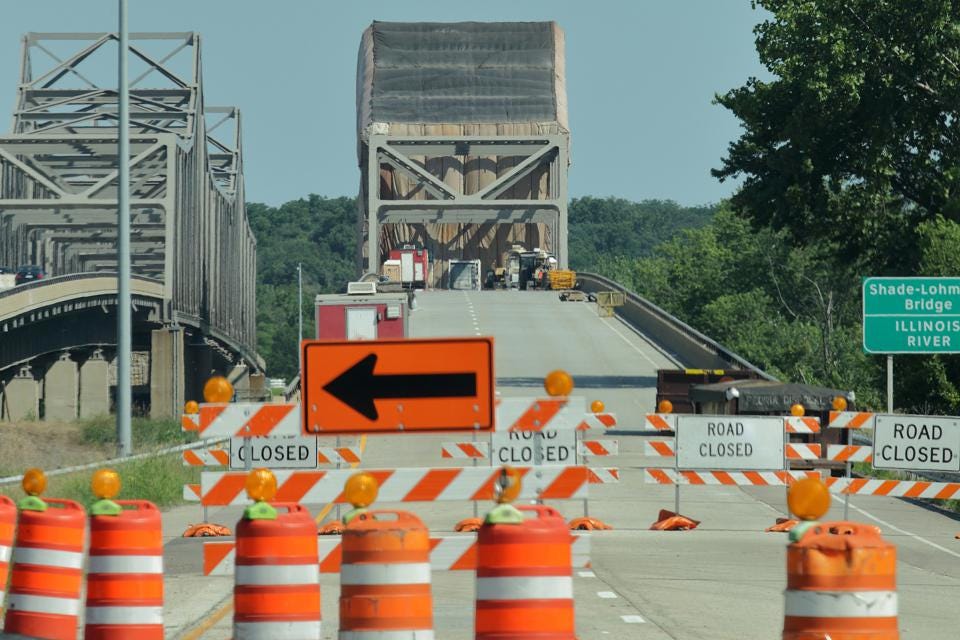
Let’s take the necessary steps forward…
U.S. infrastructure is the never-ending problem that all administrations want to solve.
Yet attempts to find a solution generally creates more questions and angst.
First, what is infrastructure?
There are the well-recognized physical infrastructure components—electricity, roads, bridges, and rail lines—and then there are the social infrastructure components—housing, social service facilities, and recreational facilities among others. Politicians are spread across the spectrum on how to address social infrastructure problems thus when the physical and social infrastructure become politically married together, the discussion on political viability for any infrastructure bill can go sideways. And the American public accordingly ponders why it is so hard to address the obvious problems in society.
Second, how did U.S. infrastructure become what it is today?
Looking back at the last few decades of infrastructure investment in the U.S., the focus has largely been on ‘new capex’ project. That said, all infrastructure requires maintenance capex, or general upkeeping expenditures, as all physical infrastructure is designed to have a useful life span. If you consider that the Interstate Highway System began construction in the late 1950s under President Dwight Eisenhower, it should make sense that U.S. roads and bridges require additional investment today.
The electricity investment boom came later in the 1980s and 1990s after the Federal Power Commission (FPC) was incorporated into the Federal Energy Regulatory Commission (FERC) in 1978 as part of congressional action to streamline energy regulations and a focus on energy security post-1970s energy crisis. The FERC focused efforts on encouraging private development of electricity generation with a big focus on gas and operators’ ability to tap wholesale market for input. Forty years later, gas (and other fossil fuels) unsurprisingly still accounts for nearly 40% of power production while the power transmission network requires greater investment.
Lastly, as much of the U.S. infrastructure is controlled by the government, its maintenance costs are dependent on taxpayer money which is increasingly limited by the growing number of causes it must be shared across and by the shrinking appetite of Americans to pay more taxes (even if targeted at specific issues or projects).
Third, what is the cost?
Pricing the cost of infrastructure, according to most advocates, is not hard. Poor infrastructure creates significant costs for the U.S. economy. Various studies, such a INRIX Global Traffic Scorecard, suggest that traffic congestion can cost the U.S. economy more than $80 billion per year. The deteriorating state of air travel infrastructure can cost the U.S. economy more than $30 billion per year. And, yet while Americans can physically see the state of transport infrastructure, it is not exactly easy to translate that number into actionable public spending initiatives and, if required, tax increases.
According to the World Economic Forum’s Global Competitiveness Report, in 2019, the United States ranked 13th globally for infrastructure quality, which is down from 5th in 2002. Thirteenth places the U.S. behind countries such as France, Germany, Spain, the UAE, and the U.K. The cost of moving up that ladder and effectively strengthening the U.S. economy is in the trillions with no clear path to fully funding the transformation.
Only 25% of U.S. infrastructure funding comes from the federal government…down from a peak of 38% in 1977. For comparison, most European countries fund most infrastructure development at the national level. As a result, state and local governments struggle to cobble together more cash to cover increasing cost. The infrastructure bill signed into law by President Biden in late 2021 does help by putting more than $550 billion towards broadband, transportation, and utilities but clearly there is more required to solve the problem.
Fourth, who will pay for the infrastructure?
Democrats have backed more federal financing with some Republican support. Critics argue that more private sector development and competitiveness would achieve better results, especially for cash-strapped governments.
User fees and tolls as well as specific taxes, such as the gas tax, can be used to underwrite either publicly or privately funded infrastructure projects. And users paying fees to use something seemingly makes political sense. But are Americans willing to pay increased taxes to the U.S. government? Americans are clearly willing to pay a base level of taxes…that base level number, however, is not exactly known.
On the other hand, private investors are happy to fund infrastructure projects that provide good yields (let us ignore what is a good yield for now). This is the same argument for governments except there is more distrust by Americans on the federal government’s ability to avoid wasteful spending (or, in other words, avoid investing in projects with bad returns) more than local governments (who are closed to the issues) let alone private investors.
Still, under an infrastructure investment program driven completely by private investors, projects will low financial returns and significantly high (non-financial) value to the greater economy would be losers. Thus, the solution has always been a combination of public and private investors. Yet the balance is agreeing how to split the bill between government funds and private investment. It seems circular and simple all-in-one: Agree on necessary projects at a local level and let the private sector fund those projects that provide the attractive returns and have the government fund the remaining projects. But then again, we fall right back into the trap of whether we trust either side to manage spending and work for the greater good. But it should be easier taking a chance on finding the necessary balance between government and private sector compared to taking a chance on infrastructure surviving beyond its useful life span…the latter option of which is proving to be a bad (and, in some cases, dangerous) idea.
